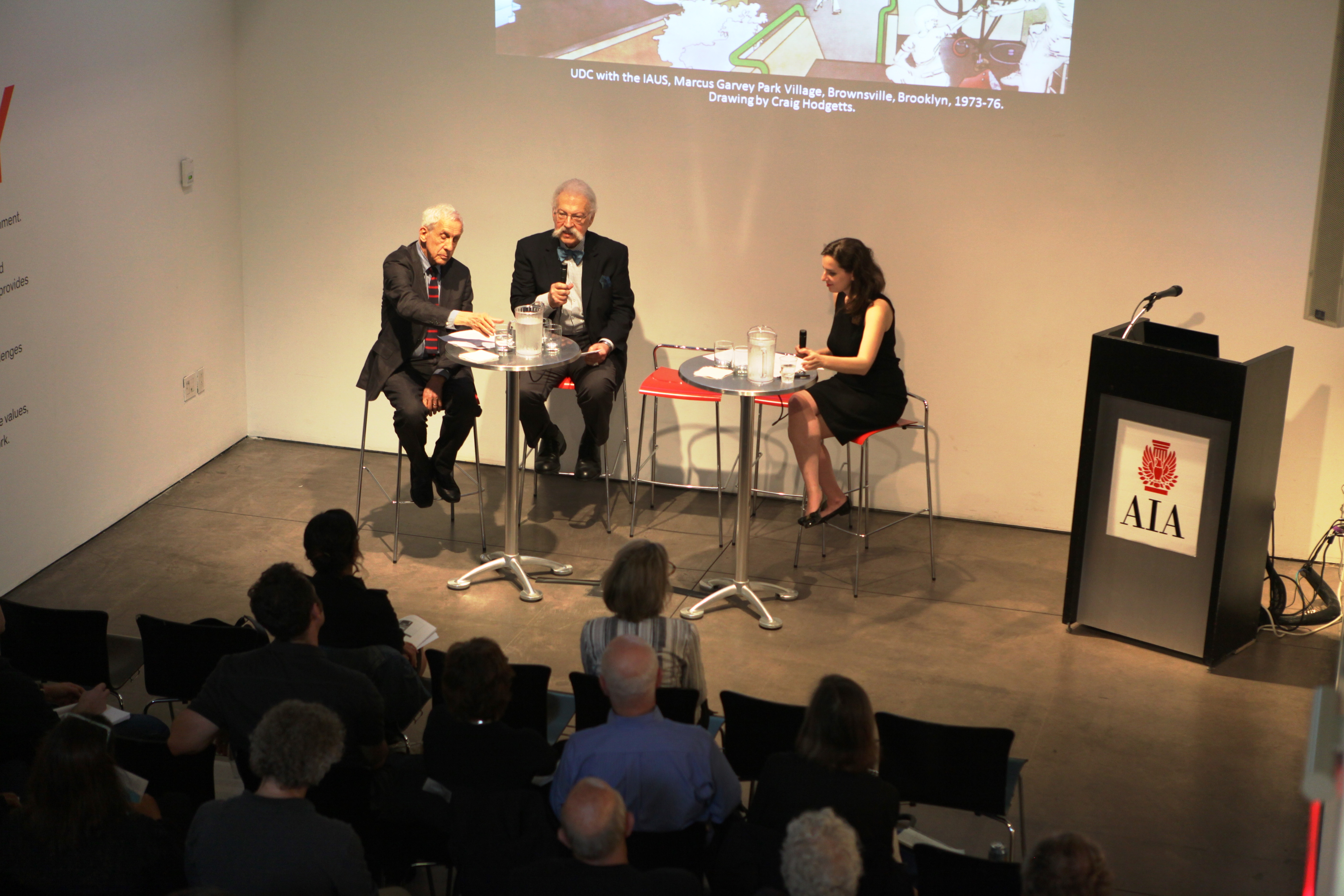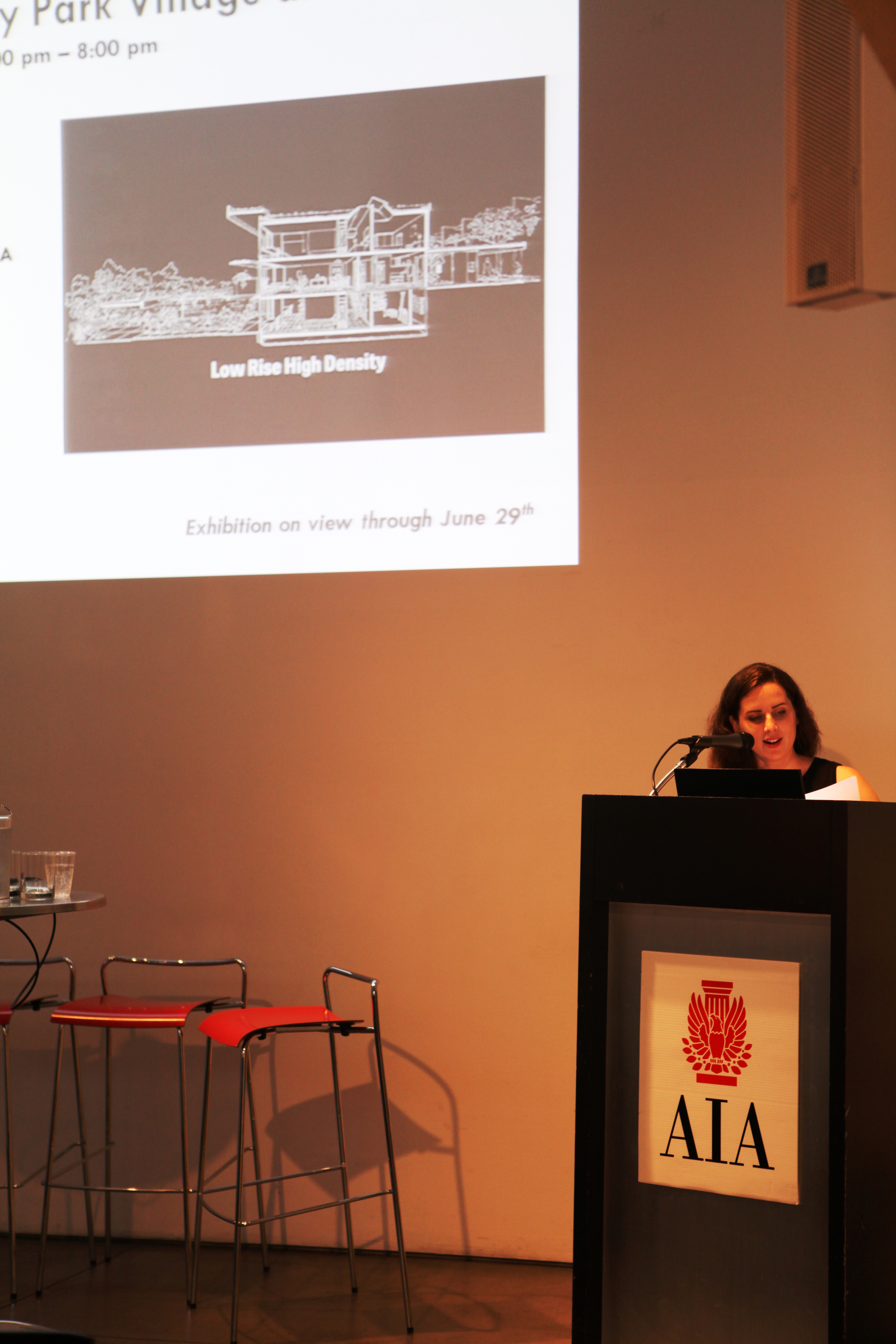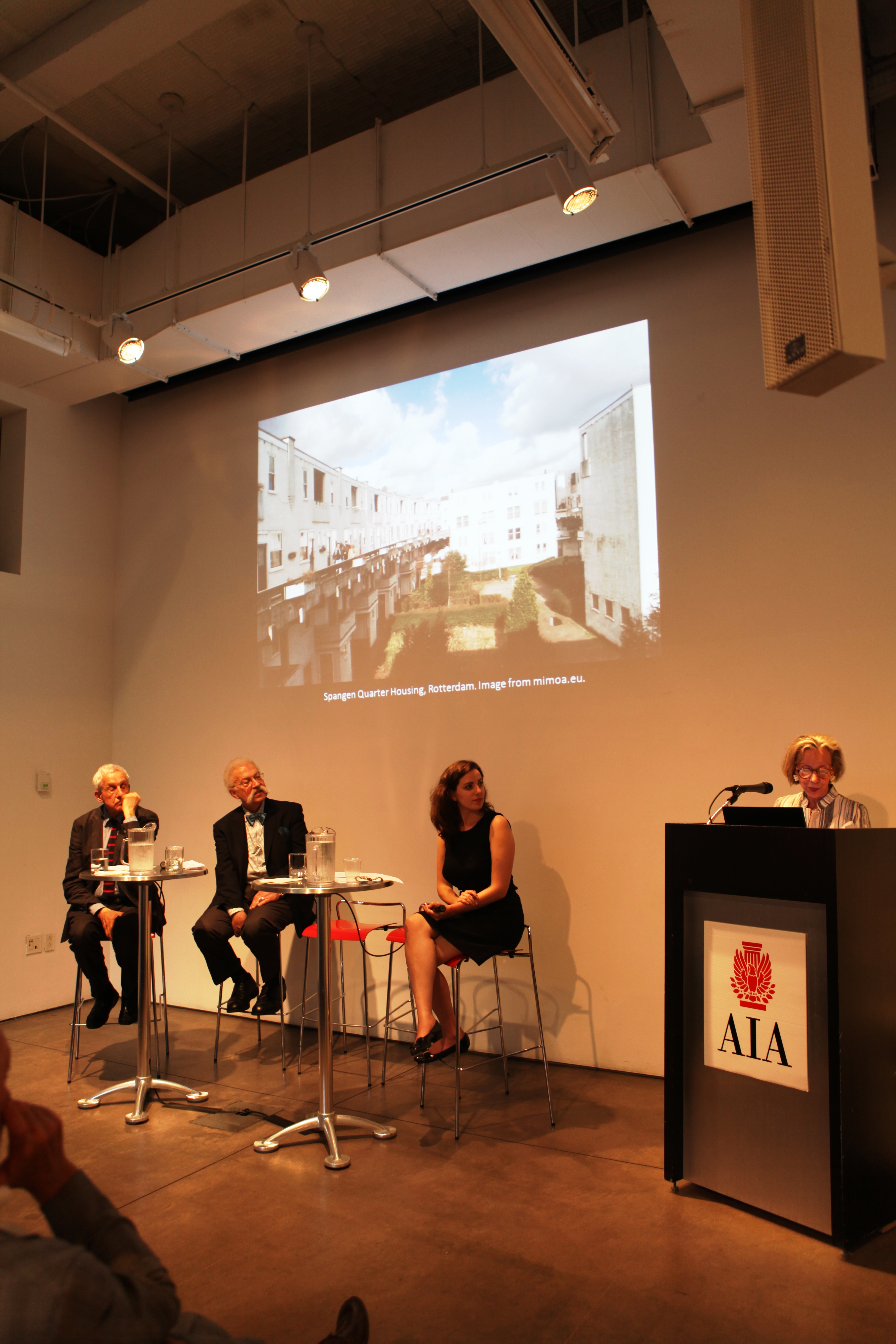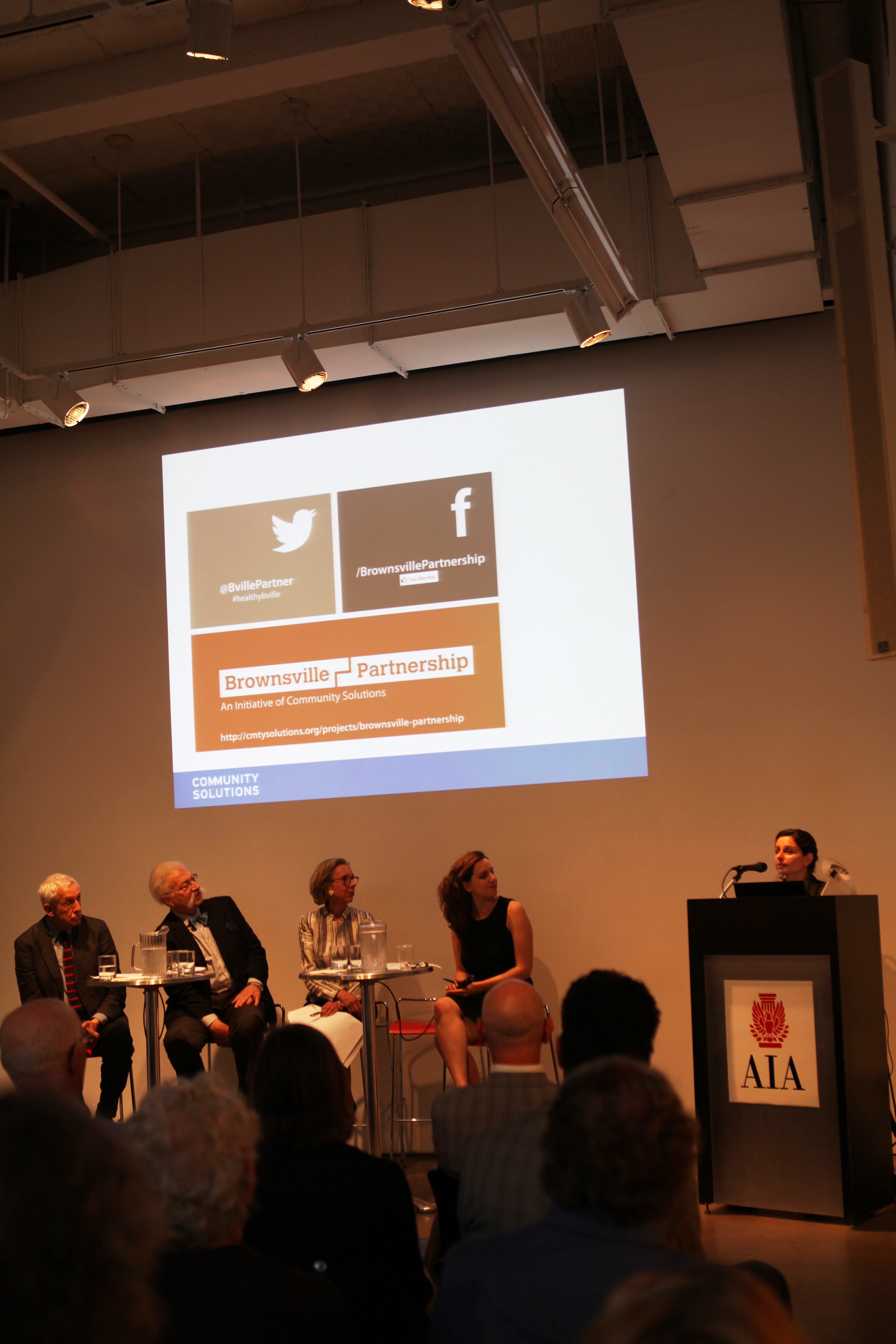by Sarah Rafson
One of the Center for Architecture’s current exhibitions “Low Rise High Density” has attracted some critical dialogue around a housing typology that inspired optimistic schemes in the 1960s and ‘70s. While the exhibition displays low-rise, high-density projects in their idealized forms, the panel discussion, Marcus Garvey Park Village at 40, reassessed the seminal housing project four decades post-occupancy. After breaking ground in Brownsville, Brooklyn, in 1973 to great fanfare, Marcus Garvey today confronts a very harsh reality as a crime- and poverty-striken community. The ensuing discussion questioned the role that architecture played in this unfortunate state of affairs.
Karen Kubey, curator of the exhibition and executive director of the Institute of Public Architecture, moderated the discussion between four panelists including Kenneth Frampton, Assoc. AIA, the project’s designer, and Theodore Liebman, FAIA, a member of the (now-defunct) Urban Development Corporation, which was founded by Nelson Rockefeller to enlist high quality design to solve pressing urban problems. The program was one day after the publication of Ginia Bellafante’s New York Times article (“A Housing Solution Gone Awry,” 06.01.13), which discussed the project’s current state.
Confronting the critical issue raised by Bellafante – the relationship between the project’s initial success and its current state – Frampton and Liebman offered some ideas: the “shotgun wedding” between their two organizations, the ensuing perfect storm of key political allies, liberal government funding, Oscar Newman’s theory of “defensible space,” and several European precedents as primary factors resulting in the Institute of Architecture and Urban Studies’s only major built work.
The architects described their memories and regrets, as did panelist Suzanne Stephens, an early critic of the project who published “A Compromised Ideal” in Progressive Architecture on Marcus Garvey in 1979. In a sensitive look at her writing, Stephens reiterated her aesthetic qualms about the work (limited access to green space and unfortunate fixtures and brick), but acknowledged that she underestimated the role the social and economic programs played in determining Marcus Garvey’s success and existence in the first place.
In fact, Stephens’ reflection echoed the general consensus of the panel: no building is an island. No amount of architectural ingenuity can compensate for the mismanagement, under-funding, and economic woes that would befall the area. For Nadine Maleh, director of Inspiring Places for Community Solutions, “there is hope in Marcus Garvey; it just has to be under better management.”
As Maleh’s comment indicates, discussion of Marcus Garvey often conflates questions of building type (the focus of the show) and local context with the deep social problems that are rampant throughout the country in hundreds of housing complexes. In the end, Marcus Garvey achieved its goal of providing light, air, and outdoor access to its residents at a higher density of occupation than the nearby NYCHA towers. Forty years later, a well-designed, well-managed housing stock for all income levels is still an urgent imperative, and so is the political will to make it possible.
Sarah Rafson is a writer, researcher, and curator. She holds a Masters of Critical, Curatorial and Conceptual Practices from Columbia University’s Graduate School of Architecture, Planning and Preservation.
Event: Marcus Garvey Park Village at 40
Location: Center for Architecture, 06.03.13
Speakers: Kenneth Frampton, Assoc. AIA, Ware Professor of Architecture, Columbia University Graduate School of Architecture, Planning and Preservation; Architect, Marcus Garvey Park Village, with the Institute for Architecture and Urban Studies; Theodore Liebman, FAIA, Principal, Perkins Eastman; formerly Chief of Architecture, New York State Urban Development Corporation; Nadine Maleh, Housing Solutions/ Design + Construction, Community Solutions; Suzanne Stephens, Deputy Editor, Architectural Record; formerly Editor, Skyline, published by the Institute of Architecture and Urban Studies
Moderator: Karen Kubey, Assoc. AIA, Curator, Low Rise High Density; Executive Director, Institute for Public Architecture
Organized by: Center for Architecture and AIANY Housing Committee



